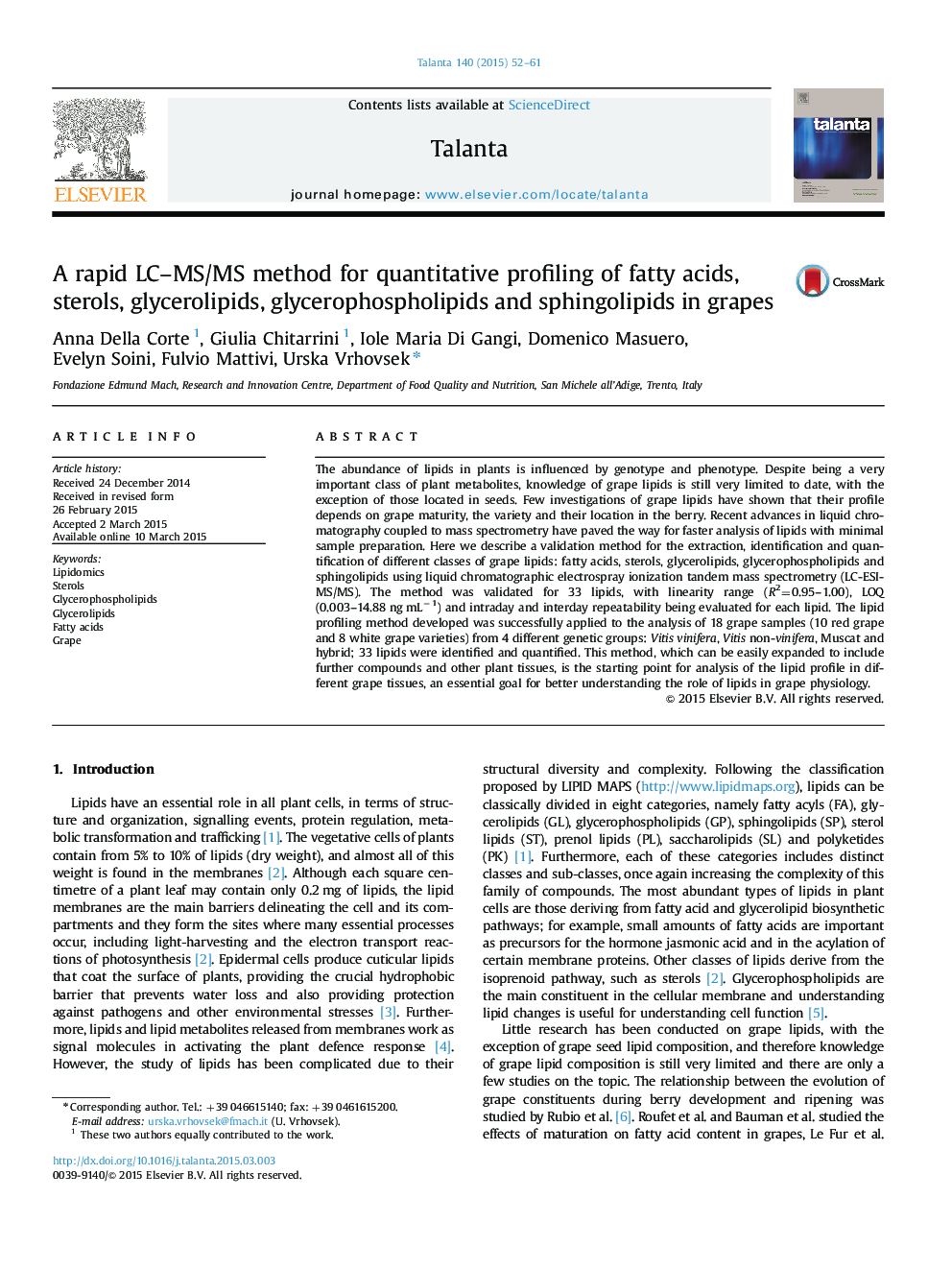| کد مقاله | کد نشریه | سال انتشار | مقاله انگلیسی | نسخه تمام متن |
|---|---|---|---|---|
| 1243057 | 1495795 | 2015 | 10 صفحه PDF | دانلود رایگان |

• UHPLC–ESI-MS/MS method development for different classes of grape lipids.
• Separation and quantification of the 33 grape lipids.
• Application and validation of the method to 18 grape varieties.
• The method can be easily expanded for studying plant tissues and physiology.
The abundance of lipids in plants is influenced by genotype and phenotype. Despite being a very important class of plant metabolites, knowledge of grape lipids is still very limited to date, with the exception of those located in seeds. Few investigations of grape lipids have shown that their profile depends on grape maturity, the variety and their location in the berry. Recent advances in liquid chromatography coupled to mass spectrometry have paved the way for faster analysis of lipids with minimal sample preparation. Here we describe a validation method for the extraction, identification and quantification of different classes of grape lipids: fatty acids, sterols, glycerolipids, glycerophospholipids and sphingolipids using liquid chromatographic electrospray ionization tandem mass spectrometry (LC-ESI-MS/MS). The method was validated for 33 lipids, with linearity range (R2=0.95–1.00), LOQ (0.003–14.88 ng mL−1) and intraday and interday repeatability being evaluated for each lipid. The lipid profiling method developed was successfully applied to the analysis of 18 grape samples (10 red grape and 8 white grape varieties) from 4 different genetic groups: Vitis vinifera, Vitis non-vinifera, Muscat and hybrid; 33 lipids were identified and quantified. This method, which can be easily expanded to include further compounds and other plant tissues, is the starting point for analysis of the lipid profile in different grape tissues, an essential goal for better understanding the role of lipids in grape physiology.
Figure optionsDownload as PowerPoint slide
Journal: Talanta - Volume 140, 1 August 2015, Pages 52–61